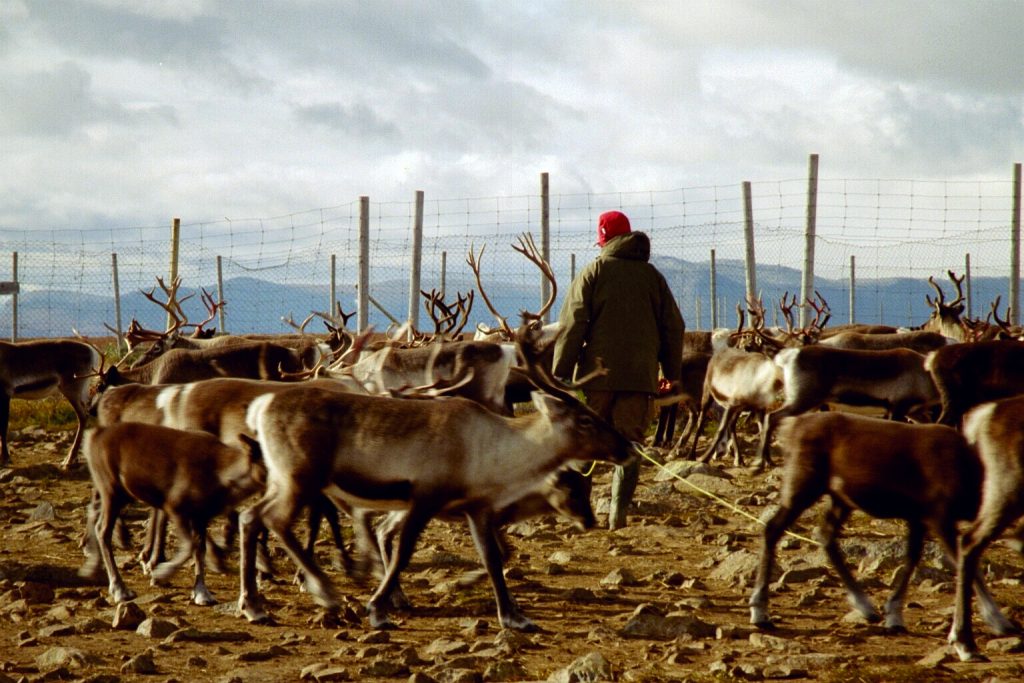How Indigenous Voices Should Shape Science Reporting

A Saami herder checks on his reindeer in Sweden. Photo: Mats Andersson/Wikimedia CC-BY 2.0
By Jennifer Lu
SAN FRANCISCO—Indigenous voices are integral to science and science reporting. That’s why journalists should keep an open mind and be aware of political narratives when reporting on indigenous issues, four speakers said 28 October during a session at the World Conference of Science Journalists 2017.
Key to keeping an open mind is getting rid of the notion that traditional knowledge—observable science passed down as folklore instead of in peer-reviewed journals—is unscientific. That notion has led to a chasm between science and indigenous voices.
For example, in one of India’s most biodiverse hotspots, local tribes have long known about the medicinal properties of plants in the region. But these species have yet to be catalogued by Western scientists, said Padma Tata Venkata, a science reporter based in the country. One tribe chews a berry for energy—a property quickly capitalized upon by ethnobotanists who discovered the herb through observing their local guides on a field expedition.
Yet there is a misconception that “science came to India two centuries ago with the English language,” Padma said. In fact, it has been there all along.
“When you hear traditional, you think old.”
In Norway, traditional knowledge promotes a method of reindeer castration that sounds backward but is less painful than surgery and improves herd health, said Gunn-Britt Retter. Retter leads the arctic and environment unit of the Saami Council, a volunteer organization representing Saami people from Finland, Norway, Sweden and Russia.
Traditionally, Saami herders neuter the males in their herd by biting off the reindeer’s testicles with their teeth, a technique called gaskit that doesn’t require anesthesia and is followed by a quick recovery, Retter said.
The Saami neuter their reindeer because castrated bulls forage better. They have more energy to dig for food, including lichen encased in the hard Arctic ice, when they’re not fighting for male dominance or mating. This leads to a healthier herd for the Saami, who rely on their reindeer for transportation, food and their livelihoods, Retter said.
However, gaskit is banned in Norway in favor of surgery under anesthesia, which is more expensive and requires a veterinarian.
“When you hear traditional, you think old,” Retter said, which erases the validity of the traditional knowledge wrapped into the practice. “That’s why we started changing the terminology to indigenous knowledge.”
Living on the front lines
In the Amazon rainforest, indigenous peoples live on the front lines of environmental conflicts and crimes, including illegal logging, mining and animal trafficking, noted panelist Thiago Medaglia, founder of Ambiental Media and a freelance writer for National Geographic. The land on which they live is also being seized for large-scale farming.
All this is happening against a backdrop of political crisis in Brazil, which makes indigenous people vulnerable to violence against them, Medaglia said. “We have to listen to them because they are the witnesses.”
Indigenous people are starting to speak up for themselves, said Phil McKenna, a journalist for InsideClimate News based in Cambridge, Massachusetts. McKenna flew to North Dakota in 2016 to report on protests by the Standing Rock Sioux against the Dakota Access pipeline, which would cut through their water supply and sacred sites. The protestors, who called themselves water protectors, faced rubber bullets, tear gas and water cannons from public and private security forces guarding the pipeline.
The pipeline had been rerouted from its original water crossing upstream of the city of Bismarck due to concerns that the pipeline was too close to Bismarck’s drinking water source.
Fighting environmental injustice
The environmental injustice of this pipeline galvanized this “spirit of fighting” other pipelines, McKenna said. It inspired a group of teenagers to form the Youth Climate Intervenors, a group dedicated to fighting climate change and pipeline community impacts in court. Many of the intervenors are indigenous people representing themselves and their generation.
The events have turned around the notion of bridging the gap between science and native voices, McKenna said.
—
Jennifer Lu is an environmental journalist based in Washington D.C. She studied data and investigative journalism at the University of Missouri and has a background in biochemistry.

